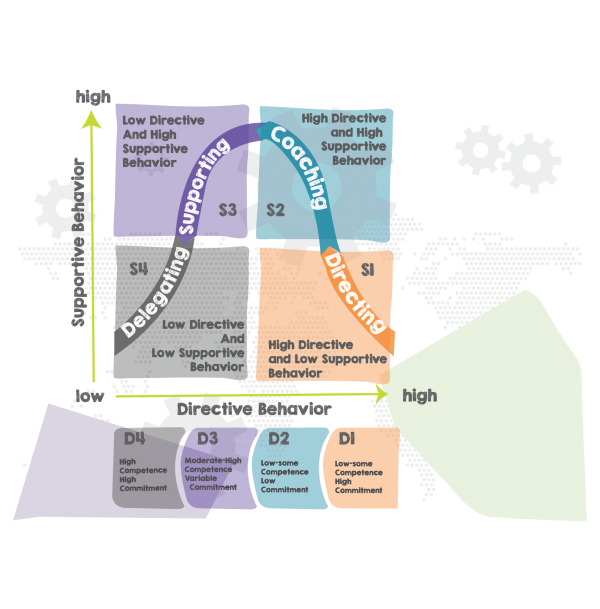As someone pretty into personal development and the development of others, I don’t use this model nearly as often as I ought to …
The Situational Leadership concept was created in 1969 by Paul Hersey and Ken Blanchard. Now, you might know the name Ken Blanchard from the “One-Minute Manager” series of books. A fantastic series of little books which I was introduced to by my best boss ever, Pete Davies, who I worked for as a young engineer.
The origins of the model come from research undertaken done at Ohio State University which held that leadership styles are composed of combinations of two main variables:
- Task behaviour and
- Relationship behaviour
A key component, indeed a fundamental principle, of the model is that there is no single “best” style of leadership.
The Situational Leadership model is an adaptive model which encourages leaders and managers to take stock of a number of variables in the workplace, not least; their people / team, their ability and willingness to undertake the task, the task itself and the relationship.
However, before we dip into the model proper it’s probably worth asking the question what is your natural style of leadership?

The reason for asking this is that in most instances your natural style is usually percolates to the top when you are under pressure, so it’s best to have your own head around where your gonna go given the pressure is on!
Taking the task behaviour bit first, the right leadership style will depend on the person or group being led and their ability (or competence) and motivation (or commitment) for undertaking the work. The four levels of what was originally called “maturity” but is now called “development” were identified as being:

The way to think about the development styles is as a continuum from D1, the enthusiastic beginner or newbie; very keen but they don’t yet know the ropes, to D4, which is Nirvana, the place you need to get staff too …running under their own steam …these are your people ”fitted with their own Duracell’s”, as one client likes to remark.
It’s critical to recognise that maturity levels, and I often have to catch myself, are also very much task-specific. A person might be brilliant, skilled, confident and motivated in their day job, but ask them to do something new and they would have a development level of D1 if they don’t yet have the relevant skill set.
The point is you need to recognise that someone very competent in their day job “may” fall on their face given a new and different responsibility or task. Our consultants are great at their job face to face with customers, but ask them to take a meeting with the bank manager, or the pensions provider, and that might be another story! The point is the tasks are context and competence specific.
However, it is where the task behaviour and the relationship behaviour intersect that makes for a great leader and the model harnesses this by categorising the leadership role into four behaviour styles, to which they gave the catchy moniker S1 to S4.

As a general rule, the model suggests the following development levels tend to require the following styles:
- D1 – the best style is Telling / Directing – S1
- D2 – the best style is Selling / Coaching – S2
- D3 – the best style is Supporting– S3
- D4 – the best style is Delegating – S4
Conclusion
Whilst it all seems pretty common sense nowadays, the model is still an effective and useful tool highlighting the fact that the most successful leaders are those who adapt their leadership style to the performance readiness (ability and willingness) of the individual or group they are attempting to lead or influence.
Effective leadership varies, not only with the person or group that is being influenced, but it also depends on the task, job, or function that needs to be accomplished. Effective leaders need to be flexible and must adapt themselves to the situation.
Related tools and ideas
- Neuro Linguistic Programming; Particularly Shelle Rose Charvet’s work on motivation profile
- Blake and Mouton’s Leadership Theory
- Reddin’s 3D Theory
- Talent & Wealth dynamics
Recommended references
Downloadable resources
To find out how Statius can help you deliver:
• Better strategies
• Better systems
• Better measurement and
• Engaged people delivering
• Better results
Call us now on 0208 460 3345 or email sales@statius.co.uk



Comments are closed